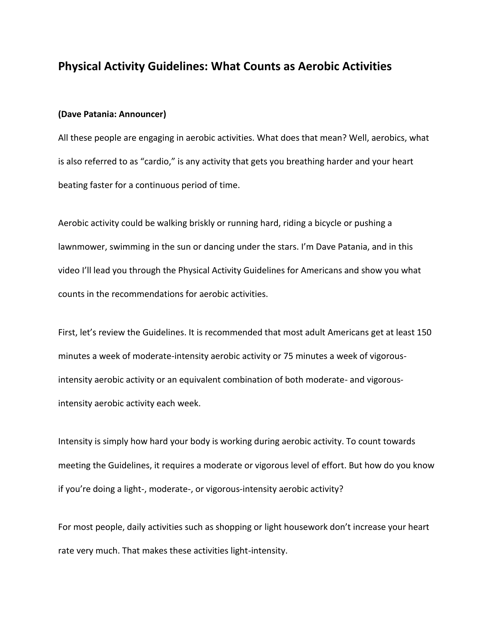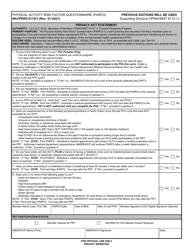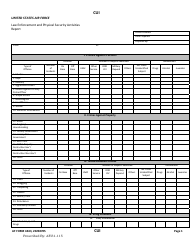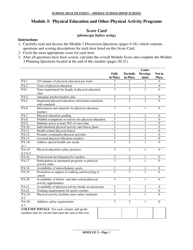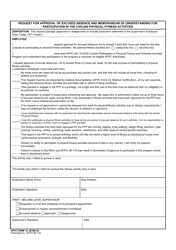Physical Activity Guidelines: What Counts as Aerobic Activities
Physical Activity Guidelines: What Counts as Aerobic Activities is a 3-page legal document that was released by the U.S. Department of Health and Human Services - Centers for Disease Control and Prevention and used nation-wide.
FAQ
Q: What are aerobic activities?
A: Aerobic activities refer to exercises that get your heart rate up and increase your breathing. These activities include brisk walking, running, cycling, swimming, and dancing.
Q: How long should aerobic activities be done for?
A: For substantial health benefits, adults should aim for at least 150 minutes of moderate-intensity aerobic activity or 75 minutes of vigorous-intensity aerobic activity per week.
Q: What are examples of moderate-intensity aerobic activities?
A: Examples of moderate-intensity aerobic activities include brisk walking, water aerobics, cycling at a moderate pace, and playing doubles tennis.
Q: What are examples of vigorous-intensity aerobic activities?
A: Examples of vigorous-intensity aerobic activities include running, swimming laps, cycling fast or uphill, and playing singles tennis.
Q: Can I combine moderate and vigorous activities to meet the guidelines?
A: Yes, you can combine moderate and vigorous activities to meet the guidelines. For every minute of vigorous-intensity activity, you can count it as two minutes of moderate-intensity activity.
Form Details:
- The latest edition currently provided by the U.S. Department of Health and Human Services - Centers for Disease Control and Prevention;
- Ready to use and print;
- Easy to customize;
- Compatible with most PDF-viewing applications;
- Fill out the form in our online filing application.
Download a printable version of the form by clicking the link below or browse more legal forms and templates provided by the issuing department.
